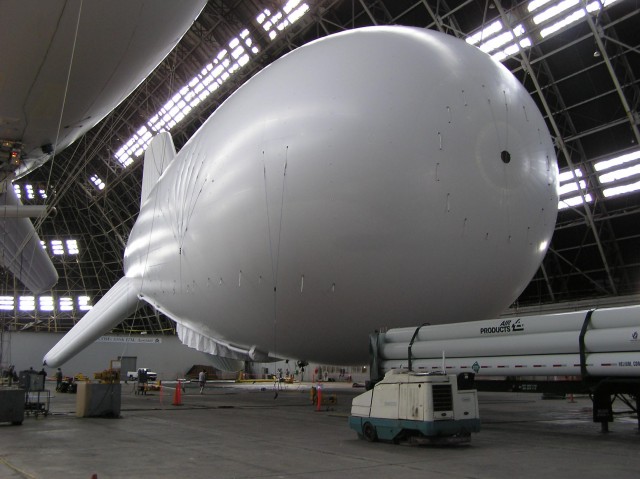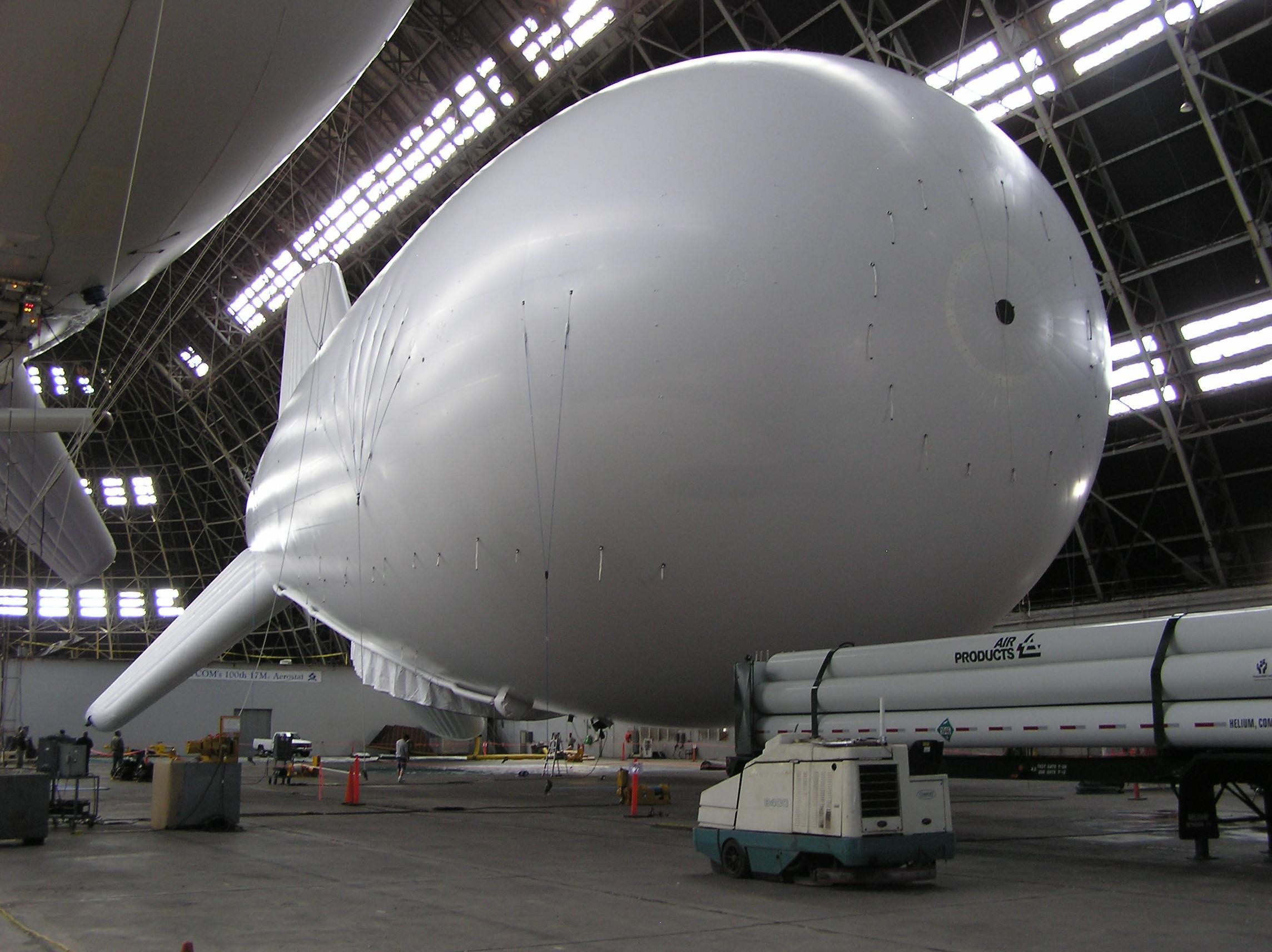
The Joint Land Attack Cruise Missile Defense Elevated Netted Sensor System Product Office has announced a major milestone in the design and manufacture of the JLENS System.
The event centered on the helium inflation of the world's first 74 meter aerostat. Aerostat serial 0001 lifted off the ground for the first time March 9 at the TCOM manufacturing and flight test facilities in Elizabeth City, N.C.
TCOM is a subcontractor to Raytheon's Integrated Defense Systems Division which is the prime contractor for JLENS.
The JLENS mission is to provide elevated, persistent, over the horizon surveillance and fire control quality data on Army and Joint networks enabling protection of the U.S. and coalition forces, as well as critical geo political assets, from cruise missiles, aircraft, UAVs, tactical ballistic missiles, large caliber rockets, and surface moving targets.
The aerostat uses advanced sensors and networking technologies to provide wide-area surveillance and precision tracking of land attack cruise missiles and other types of aircraft.
"An aerostat is a helium filled 'balloon' used to elevate payloads from low to medium altitudes," JLENS product manager Lt. Col. Stephen Willhelm said. "Small and large tethered balloons have been used over time by the U.S. military for various missions. From the Civil War when they were used as observation platforms through today where small aerostats operated by Army troops are used in support of force protection missions in Iraq, Aerostats have had a long history contributing to the defense of terrain and forces on the battlefield."
The JLENS aerostat is the first of its size and is the largest aerostat to be built. The 74 meter long aerostat, anchored to the ground by a tether and connected to an 180,000 pound mobile mooring station, covers almost the length and width of a football field. It will be able to fly a 7,000 pound communications and radar payload up to 10,000 feet.
JLENS is in the system development and demonstration phase of the acquisition life cycle. Individual components are being manufactured and the product office is preparing for systems integration which will begin this fall.

Social Sharing